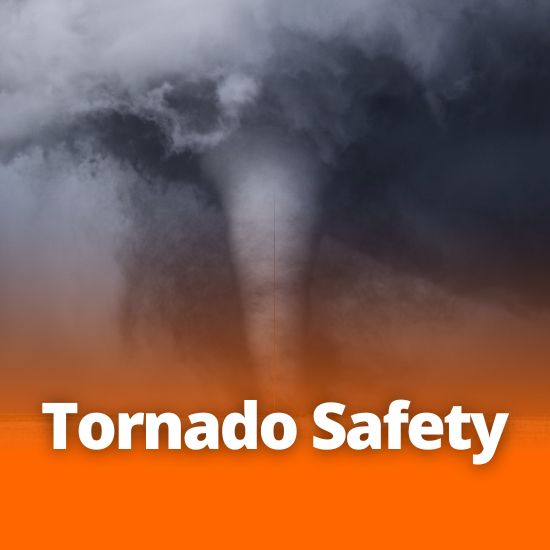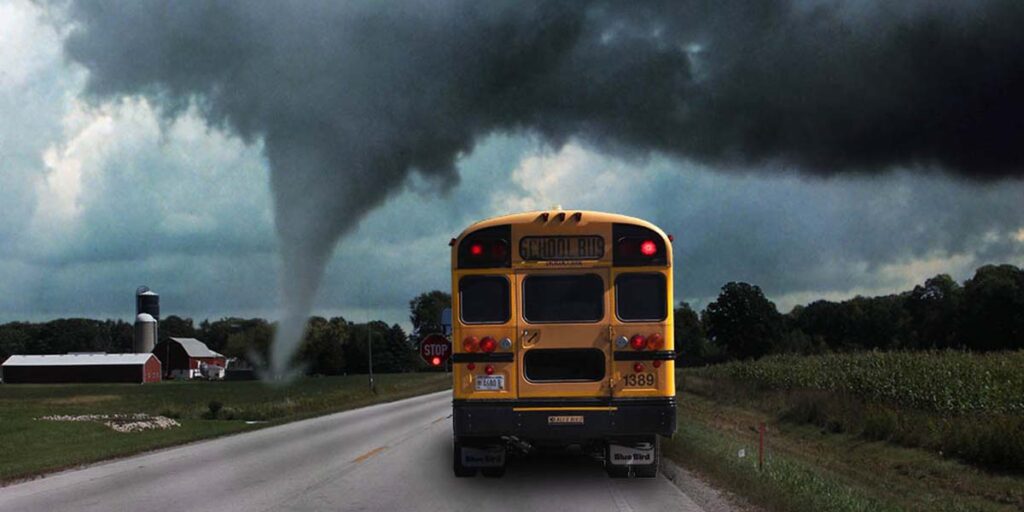
Tornado Safety
On July 1, 2023 a tornado ripped through Alberta around Didsbury and Carstairs. The funnel was 3km in diameter, was on the ground for thirty minutes, and left (destruction) in its wake. Many people were forced to evacuate their homes, and many still found themselves scrambling to get out of their campsites as fast as possible.
So, what do you do when Mother Nature decides to throw her wrath at us while we’re in a glorified tuna can on wheels – or worse: a tent. For simplicity, we are focusing on safety while on the road or camping, for more information on what to do in buildings such as apartment complexes, churches, gymnasiums, etc, visit the Canadian Red Cross or Government of Canada websites for more in depth information.
Common Rules:
- Get as close to the ground as possible; even if that means getting out of your car and laying on your belly in a ditch off the highway
- Do not chase tornados – I don’t care what kinds of “views” you could get on TikTok or Youtube, no video is worth your life
- If a tornado looks like it isn’t moving, it’s most likely heading directly towards your position.
In a car, RV, or mobile home:
- If you spot a tornado, get to the closest shelter
- If it gets close, get out of your vehicle and take shelter in a low-lying area. Get close to the ground and protect your head.
- Shelter will be a building with a strong foundation (which is why more than half of the deaths caused by tornados occur in mobile homes)
- If you have to take shelter in a ditch (away from your vehicle or mobile home) stay aware of possible flooding from downpours and be prepared to move.


Prepare and Aware
Know the level of risk you’re at for a tornado by contacting local authorities, checking social media or weather reports.
Environment Canada is a good source for up to date information
A warning means a tornado is already occurring or will occur in your area. Evacuate if safe and you’re able to do so.
A watch means a tornado is possible/the conditions are good for one to occur. Stay aware of alerts for your area going forward until the watch is lifted.
Danger signs:
- Dark skies, often greenish or orange-gray
- Large hail
- Large, dark, low clouds that move in a rotation. You may see small funnels appear and disappear
- Roaring – tornadoes sound like trains
Finding Shelter
If you are able to get to a building, proceed with the following as the location allows:
- Get away from external doors, walls, and windows – a basement is most preferred, and under the stairs. Those are typically the strongest structural area.
- In a high-rise building, get into a hallway within the center of the building.
If you are unable to get to a building and must stay outdoors:
- Get to a ditch, as low as you can. Lie flat on your belly, cover your neck and head with your arms
- Keep babies in car seats, they’re made to withstand impacts and protect their charges.
- If you can, put a helmet on and cover yourself with a blanket
- Do not stay in or beside your vehicle, a building that does not meet the requirements for safe indoor shelter, or trees.
- Do not shelter under an overpass or bridge – narrow passages can act as funnels and amplify wind
For more information
Government of Canada https://www.getprepared.gc.ca/cnt/hzd/trnds-en.aspx
Canadian Red Cross https://www.redcross.ca/how-we-help/emergencies-and-disasters-in-canada/types-of-emergencies/tornadoes/tornadoes-information-facts